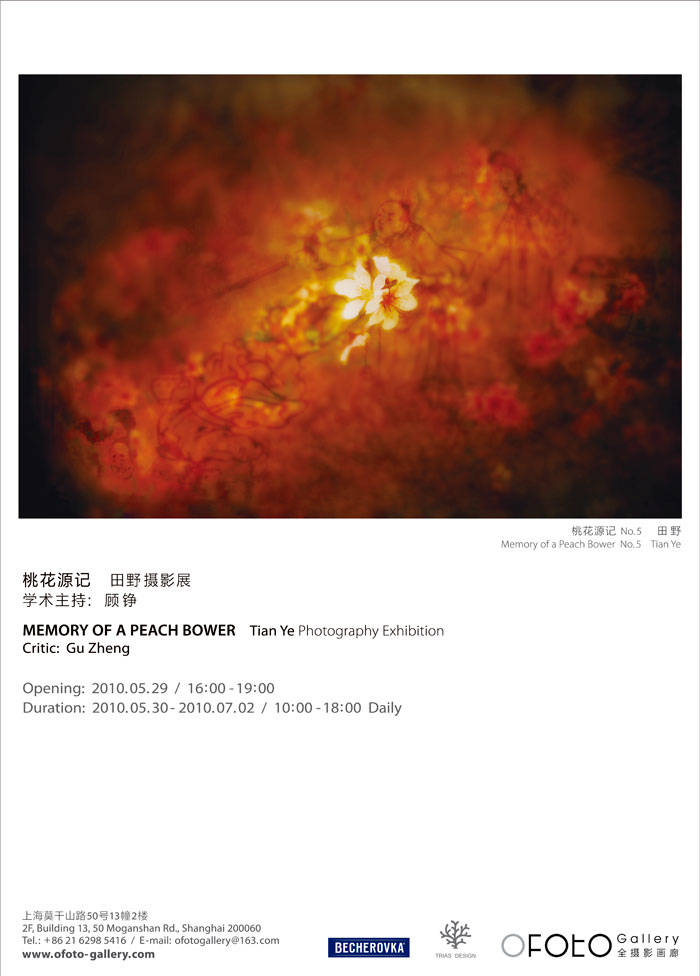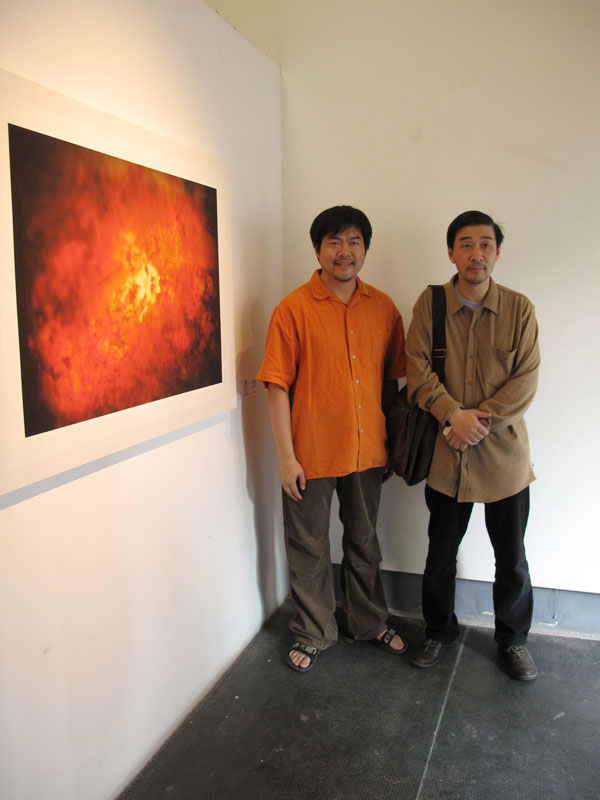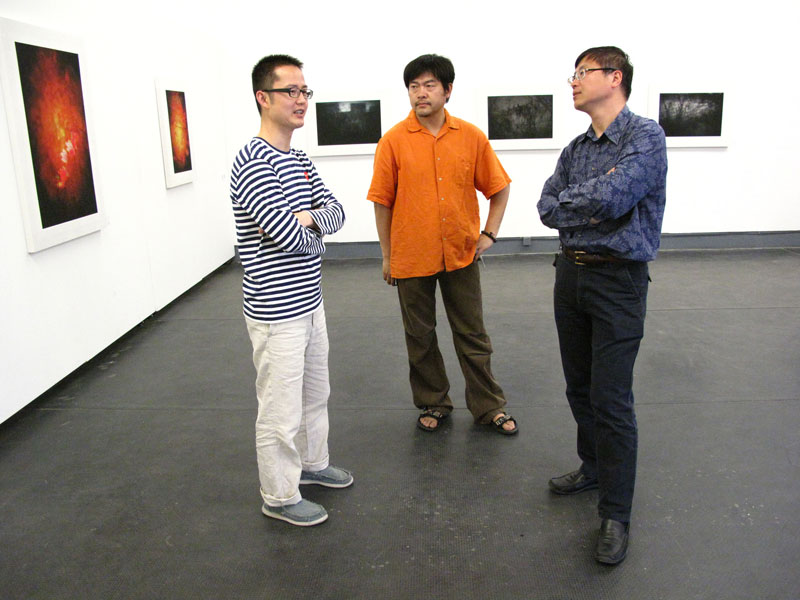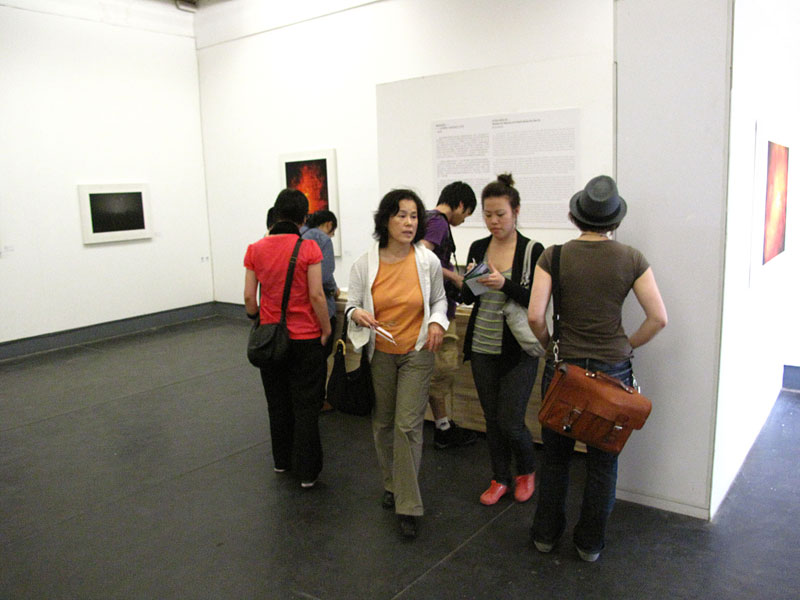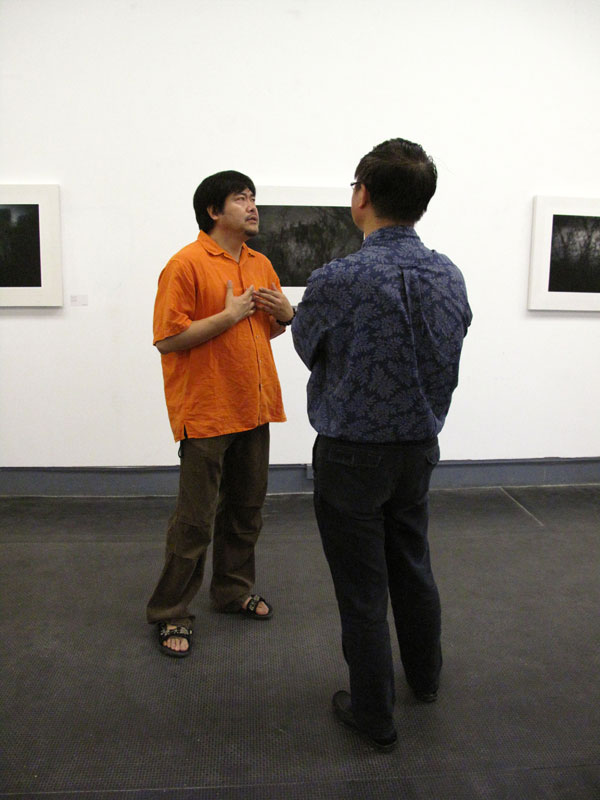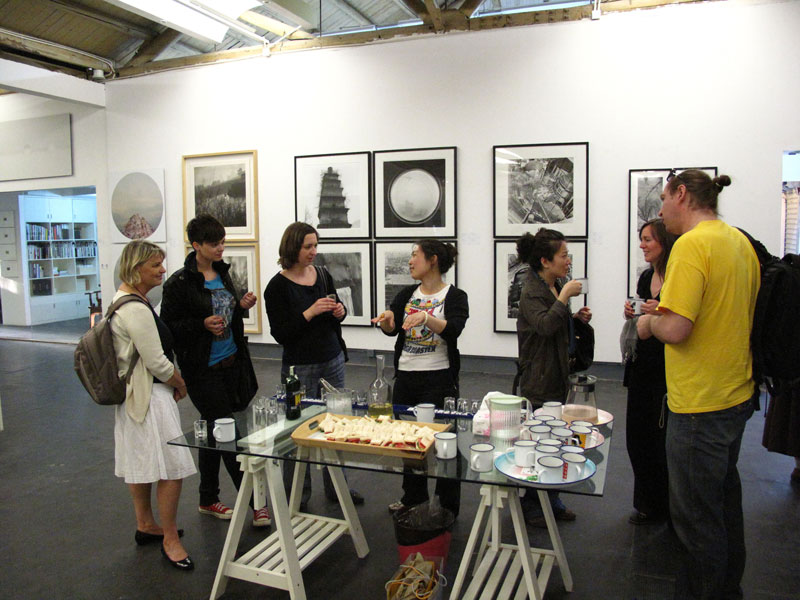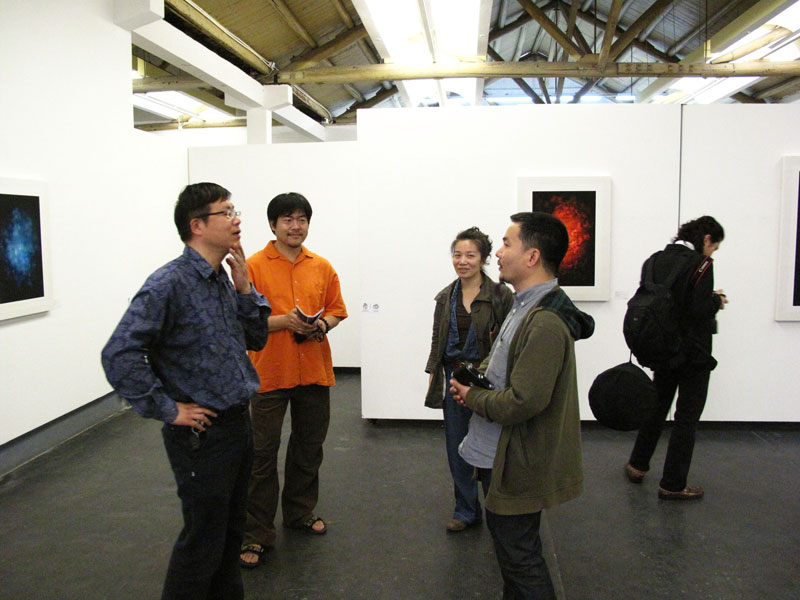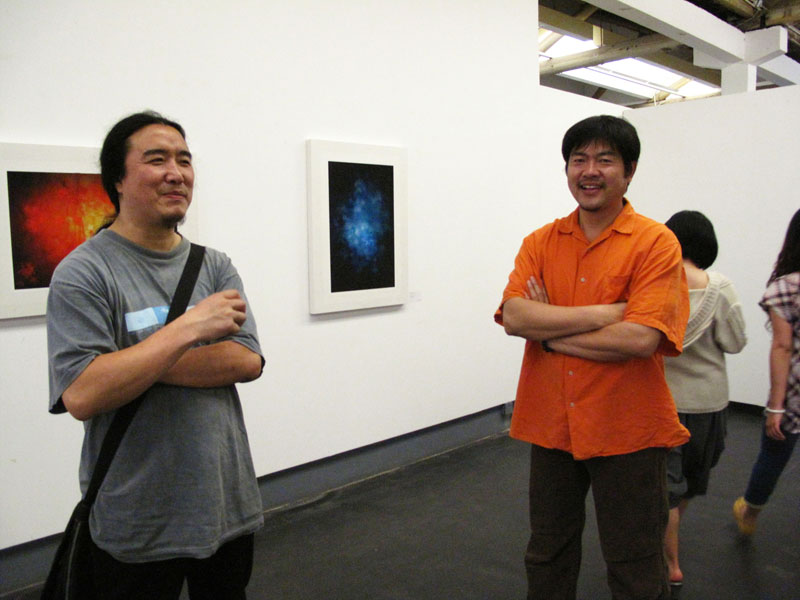In the Midst of...
Written for Memory of a Peach Bower by Tian Ye
by Gu Zheng
The first of Tian Ye’s works which I have seen were from his series Wandering Slowly, five or six years ago. The photographs offer a unique perspective on the periphery between the city and the suburbs. Simultaneously, the photographer’s personal perspective and feelings are incorporated into the photographs. This series’ interplay between a spectator and a contemplative angle shows the vacant view of a loner, and also encapsulates Tian Ye’s key characteristic. Yet what attracts me to this series and makes a deep impression on me is also what lends these photographs a certain gloom. This gloom has a depressing but not nihilistic feel. It is in fact this delicate state of wandering and ambiguous gloom, perhaps that makes the artist’s work unique. Following Wandering Slowly, Tian Ye has also produced several series of work which, whilst moving in different directions, maintain his lyrical specificity. Yet, his current series, Memory of a Peach Bower, can be seen as the latest results of Tian Ye’s artistic exploration of recent years.
Like Tian Ye’s Wandering Slowly, Memory of a Peach Bower still maintains a certain gloom. However, due to the over-shadowing of certain key hues, this seemingly colourful gloom gives the work an erotic sense. Within Memory of a Peach Bower, the picture’s foreground presents relatively distinct blossoming flowers, and constitutes the picture’s key element. Yet, through the well-placed flowers and branches, we can also glimpse some vague silhouettes of ancient couples hidden in the midst of the flowers under the trees. They are either lying in bed asleep or sitting face-to-face, either courting each other or standing alone. The indistinct figures and dim shadows of flowers are superimposed, jointly constructing an ambiguous … romantic fantasy.
The origins of these forms of ancient figures are reportedly from several ancient prints which the artist discovered, as well as sections of his friends’ work. The pictures’ basic colours are simply blue and red. Through figure forms derived from painting and through overlapping flowers derived from photography, as well as the re-rendering of these two basic colours, the picture alters, leading us to find erotic associations and fantasies, yet simultaneously to find connections with bloody scenes and legends. Perhaps through these colours, Tian Ye is asserting his understanding and vision of life in ancient times. Furthermore, his manipulation and composition of the photo also places us within a certain framework from which to peep at the scene. However, this ambiguous feeling, in a certain sense, strengthens the desire to see clearly and to discover a deeper level of definition. With this strategy, Tian Ye transforms the full blossom of gloom into a gloomy blossom. The helplessness of the original obscurity is transformed into the excitement of discovery and gain.
From Tian Ye’s pictures of the seemingly romantic and enjoyable common life of ancient people, we discover a state of mystery caused by the intention to cover up. Yet perhaps the issue raised by this is also what lies within these seemingly calm, leisurely, comfortable images of romance, in the midst of the veiled flowers? Through years of misty layers, isn’t the past which arises before our eyes, the history which we are confronted with today, akin to the images emerging from Tian Ye’s pictures; both romantic and yet utterly impenetrable, both discursive and yet sealed? However, with this series in mind, we must also question whether this combination of images expands our understanding of the past, and enriches the expression of the past. In other words, is this work cleverly bringing to our attention our increasingly tenuous handling of the reality, including our past?
